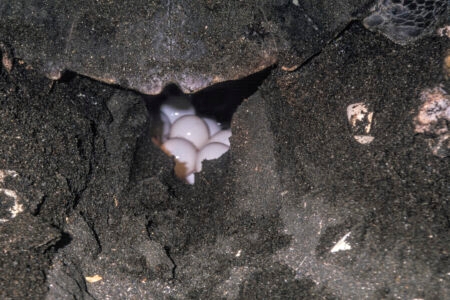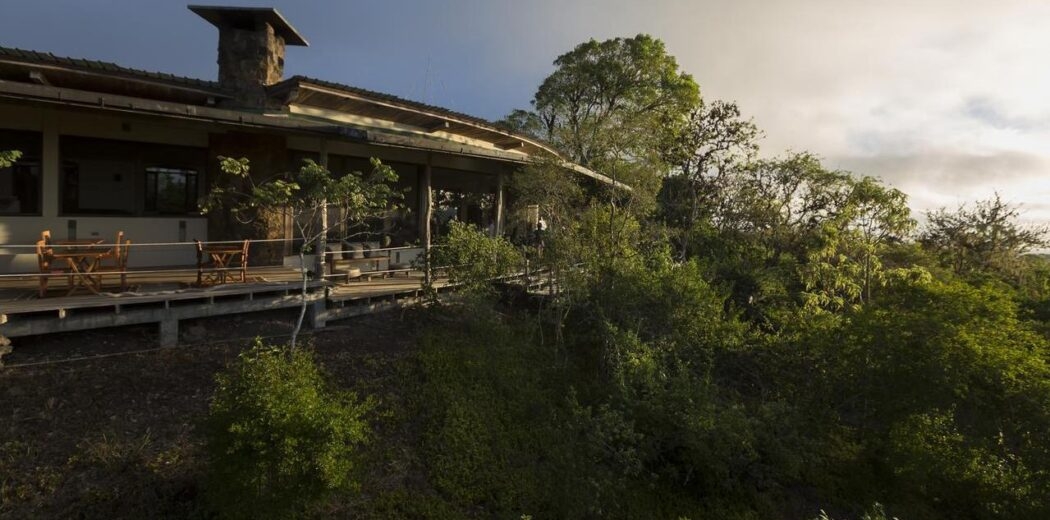The best time to visit the Galápagos Islands is between December and April for calm, warm waters, perfect for snorkelling and cruising. Bird watching is best between April and June and migratory whales visit from June to September, so there’s always a good time to visit the Galápagos Islands.
The Galápagos Islands are located on the equator, so temperatures don't tend to fluctuate too dramatically, remaining warm all year. The seasons can generally be split in two; warm and wet (December to April) and cool and dry (May to November).
Galápagos Weather Guide
Although the Galápagos Islands are great to visit all year round, each month brings shifts in the climate. Changes in rainfall, temperature, currents and winds will affect the conditions for many activities such as cruises, snorkelling and diving. Seasonality also plays a big part in altering wildlife behaviour throughout the year – so, if there’s a species or an activity you’re particularly interested in, read through our climate guide below to find out the best month for your visit.
January is a warm month. The wet, warm summer season has begun and although the rains are starting to increase compared to the dry season, it’s still a good time to visit.
Wildlife highlight: Sea turtles begin visiting the islands to lay their eggs.

February is a warm month known for clear, calm and warm waters which are great conditions for snorkelling. Temperatures and rainfall are climbing now, with plenty of sunshine between the showers.
Wildlife highlight: Mating season for both land and sea iguanas.

March is one of the wettest and hottest months on the Galápagos Islands. Water temperatures are also warm so it’s comfortable to snorkel and dive for longer periods of time.
Wildlife highlight: A great time to see penguins on Fernandina or Isabela islands.

The hot summer is starting to draw to a close. Temperatures start to cool slightly and the islands are looking green and lush after the rains.
Wildlife highlight: See the Galapagos albatross on Espanola Island.

Rainfall has now dropped significantly and the temperatures, although still pleasant, have dropped a little too. Water temperatures are also cooling which attracts plankton making the waters nutrient-rich for marine life.
Wildlife highlight: Mating and nesting season begins on Genovesa island for Frigatebirds.

A very dry month on the islands and the start of the Garua (mist) season. The highlands can be shrouded in a thick, foggy mist during the mornings and temperatures can feel quite chilly.
Wildlife highlight: Overall, June is a great month for birding and the start of the whale season.

A cool and dry month with the morning mists still prevalent, particularly in the highlands, burning off quickly in the low lying areas. Ocean currents are much stronger now and the water temperatures continue to cool.
Wildlife highlight: Blue-footed Boobies begin their mating ritual ‘dance’ on North Seymour.

Another cooler month with very little rainfall. The waters remain cool and strong winds turn the waters quite choppy at times. Although expedition cruises and snorkelling are still popular, it can be best to choose larger yachts or catamarans for stability if you suffer from sea-sickness.
Wildlife highlight: Whale sightings on the western islands are common at this time of year.

September continues to bring cool and dry conditions with water temperatures that still feel chilly. In terms of the rough seas, things can still feel quite choppy while cruising.
Wildlife highlight: The final month to spot dolphins and whales. September is also mating season for sea lions.

Climate-wise, a very similar month to September; cool and dry and the waters are still cool and a little choppy.
Wildlife highlight: A great month to spot seal pups and blue-footed booby chicks on Española and Isabela Islands.

Temperatures are on the rise in November as the summer season approaches. The winds die down and the waters calm for great cruising conditions.
Wildlife highlight: Green sea turtles lay their eggs on Santa Cruz island

The warm summer season has arrived, the water is calm and it’s a good time of year to snorkel and cruise. In terms of rainfall, December is changeable and although typically a dry month, some showers can start to creep in towards the end of the month.
Wildlife highlight: Galapagos giant tortoises eggs start to hatch at the breeding centre on Santa Cruz.

When to Visit the Galápagos Islands by Month
Choosing the best time to visit the Galápagos Islands depends on what you want to do and what wildlife you want to see. You can choose to cruise and explore multiple islands, or stay at a luxury lodge, which can be great for family trips. On land you can experience hiking, biking as well as water activities. Of course there’s always the option to combine both.

Best time to Visit for Snorkelling
One of the main reasons to visit the Galápagos Islands is to snorkel among incredible marine life. The best time to visit the Galápagos Islands for snorkelling in warm and calm waters is between December and May. The underwater visibility is usually very good at this time.
Although snorkelling is great all year round, from April to November the water can feel quite cold and you’ll need a full wetsuit if you’re going to be in the water for any length of time. In September and October in particular the wind picks up and the waters can get choppy, as well as chilly.

Best time to Visit for Bird Watching
April to June is the best time to visit the Galápagos Islands for bird watching. April is the best month to see the mass arrival of the Galápagos albatross on Espanola. In May, Frigatebirds begin mating and nesting at Genovesa island and the males display their bright red gular pouch (throat).
June marks the nesting season for many different species of birds, including flightless cormorants (an endemic species to the islands) and penguins. With an ecosystem that remains largely untouched and numerous bird species that call the region home, the Galápagos Islands is a bird watcher’s dream.

The Best Time to Visit to Spot Sea Lions
The best time to visit the Galápagos Islands to see sea lions is during the breeding season from October and November. During these months hundreds of dominant males line the shoreline. Although it’s impressive to see such numbers, visitors must be wary of the males who can display aggressive behaviour as they defend their territory.
The Galápagos sea lion pups can be seen during most of the year. However the colder, dry months of August and September and often extending to October is the best time to see seal pups. Although these pups are extremely cute and curious of humans, there are strict regulations forbidding visitors to approach the little pups.

The Best Time to Visit for Whale Watching
The best time to go whale watching in the Galápagos Islands is during the cold dry season, from June to September. These months see female humpback whales on their migration routes and there’s lots of surface activity in the channel between Isabela and Fernandina islands.
However, it’s worth noting that you can spot whales all year round on the Galápagos Islands. Orcas, pilot whales, blue whales and sperm whales are resident species. They tend to stay off-shore and spend a lot of time underwater feeding so they can be trickier to spot in the warmer season when there’s less migratory activity.

The Best Time to Visit for Diving
If you’re a keen scuba diver then the best time to visit the Galápagos Islands is between June and October. During these months, increased nutrients in the water attract the bigger marine life including whale sharks, manta rays and huge schools of hammerhead sharks.
This cool season, although a little chilly, is the best for seeing the biggest variation of marine life. You might get to see literally hundreds of different species on one dive during this time of year - truly some of the best diving in the world.

The Best Time to see Turtle Hatching
Endangered green sea turtles, ungainly yet beautiful in the water, are only commonly seen in a few places in the world, including the Galápagos Islands. The best months to see sea turtles in the Galápagos Islands is April, in the shallow waters of Bachas Beach on Santa Cruz island you'll find the eggs starting to hatch.
Although turtles can be spotted throughout the year, the nesting season, during January and February is another good time to visit the Galápagos Islands. Naturalist guides will be able to point out and explain the duplicate empty nests the turtles will make in a bid to confuse predators as they try to lay their eggs safely.
Journey to the Galápagos Islands
Uncover the extraordinary wildlife and remote natural beauty of the Galápagos Islands. Our travel experts will design a bespoke journey that aligns perfectly with your idea of adventure.
Galápagos Islands FAQs
The hottest months in the Galápagos Islands are March and April, it can also be a little rainy at this time. Expect temperatures to easily reach 31°C ( 88°F), often feeling hotter with the high humidity.
December through to May are the wettest months in the Galápagos. The weather feels tropical as the temperatures at this time are warm. Despite the rain this is still a great time to visit the islands for wildlife expeditions, the rains don’t tend to fall all day and there’s plenty of sunny spells.
You can swim in the Galápagos Islands in July, but be prepared for some cold water temperatures. Most luxury vessels will provide you with a wetsuit, helping you to stay in the water just that little bit longer. There’s also the option to see the wonders under the water from glass bottom kayaks.








